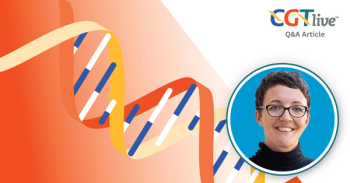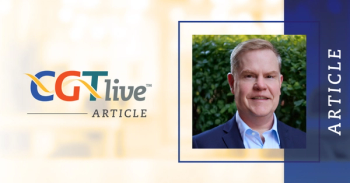
Reengineering CAR T Cells to Optimize Their Powers
Chimeric antigen receptor (CAR) T cells are a patient’s own, harvested and reengineered to attack specific malignant cells. They were initially developed using knowledge gleaned from allogeneic stem cell transplants: that donor mature immune cells can attack healthy cells in the recipient patient.
Chimeric antigen receptor (CAR) T cells are a patient’s own, harvested and reengineered to attack specific malignant cells. They were initially developed using knowledge gleaned from allogeneic stem cell transplants: that donor mature immune cells can attack healthy cells in the recipient patient.1
Now, researchers from the
AEs of CAR T cells include cytokine release syndrome, low blood pressure, neurologic events (eg, encephalopathy, aphasia, seizures, altered consciousness), neutropenia, and anemia. These can be managed via medication or resolve without treatment.3
“In immunology, it’s always about balance; you don’t want to have too much T-cell activation, and you don’t want T-cell activation to be too low,”
To redirect CAR T-cell activity, they looked at how the CD28 and 4-1BB proteins stimulate CAR T activity in B-cell malignancies, as they are affected by SHP1
For the CAR T cells costimulated by CD28, the authors discovered that if they could pharmacologically increase binding of the
For the CAR T cells costimulated by 4-1BB, the investigators increased
“Our mechanistic discoveries have immediate translational implications because kinases and phosphatases can be engineered in CAR-T cells to either enhance or tune down their activation,” the authors noted.
Researchers in the field of immunology hope to build on these findings. Their next steps include investigating how to improve the use of CAR T cells in blood cancers, specifically leukemia, and experimental treatments for solid tumors.
In Other CAR T-Cell News
The next generation of CAR T-cell therapies was front-and-center at the recent 61st American Society of Hematology Annual Meeting and Exposition in Orlando, Florida. Both abstracts and presentations
The FDA has so far approved 2 CAR T-cell therapies.
References
1. Essell JH. The history behind the development of CAR-T cell therapy. Cure® website. curetoday.com/articles/the-history-behind-the-development-of-car-t-cell-therapy. Published February 8, 2018. Accessed January 28, 2020.
2. Sun C, Shou P, Du H, et al. THEMIS-SHP1 recruitment by 4-1BB tunes LCK-mediated priming of chimeric antigen receptor-redirected T Cells. Cancer Cell. 2020;1-10. doi: 10.1016/j.ccell.2019.12.014.
3. CAR T-cell therapy: risks/benefits Cleveland Clinic website. my.clevelandclinic.org/health/treatments/17726-car-t-cell-therapy/risks—benefits. Updated June 27, 2018. Accessed January 28, 2020.
4. FDA-approved CAR T-cell Therapies. UPMC Hillman Cancer Center website. hillman.upmc.com/mario-lemieux-center/treatment/car-t-cell-therapy/fda-approved-therapies. Accessed January 28, 2020.
Newsletter
Stay at the forefront of cutting-edge science with CGT—your direct line to expert insights, breakthrough data, and real-time coverage of the latest advancements in cell and gene therapy.





































